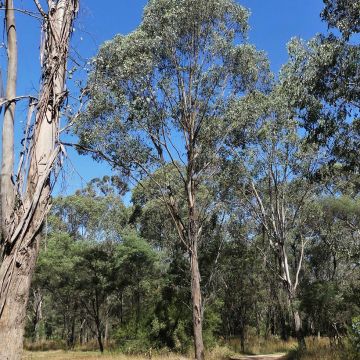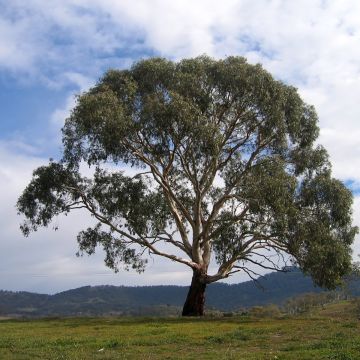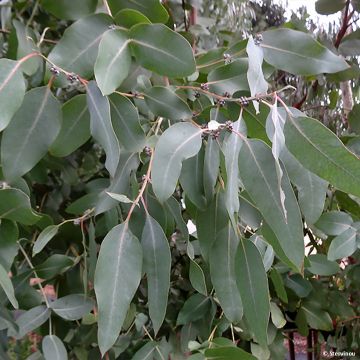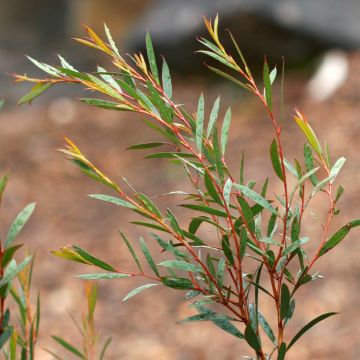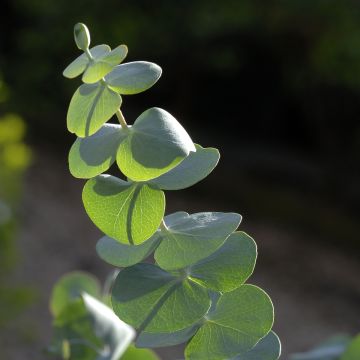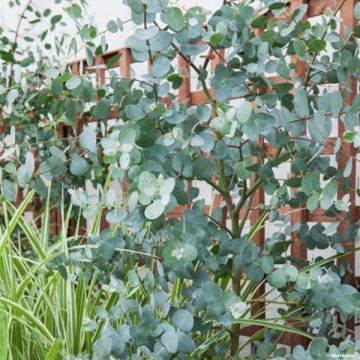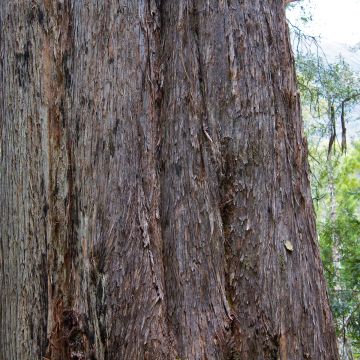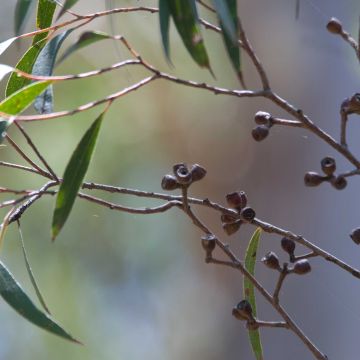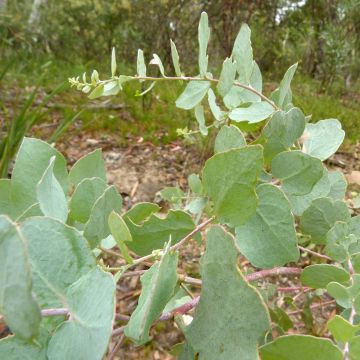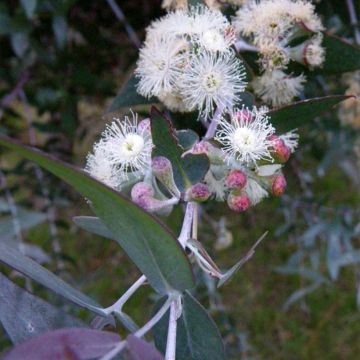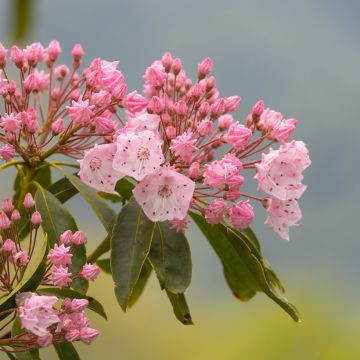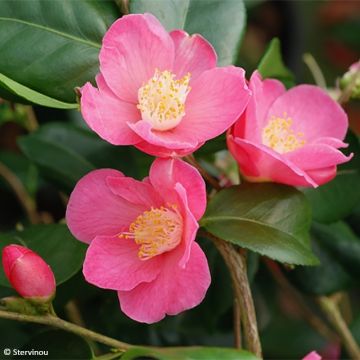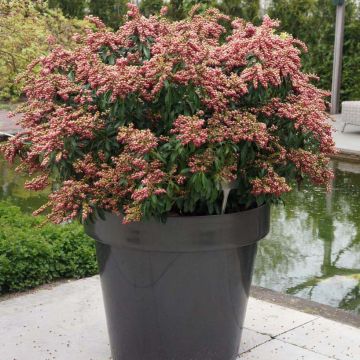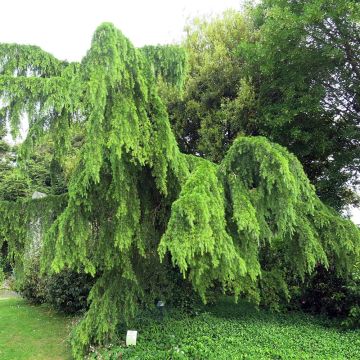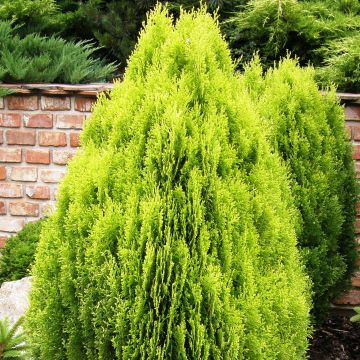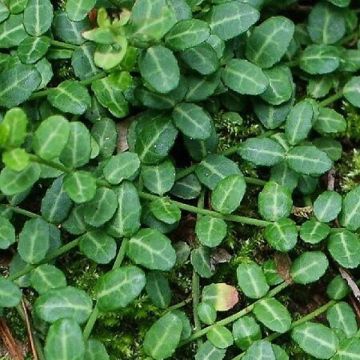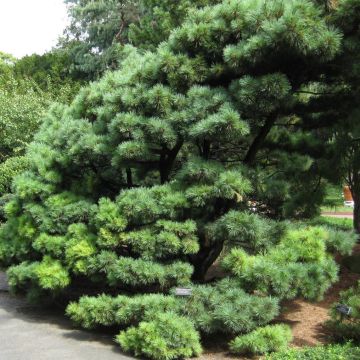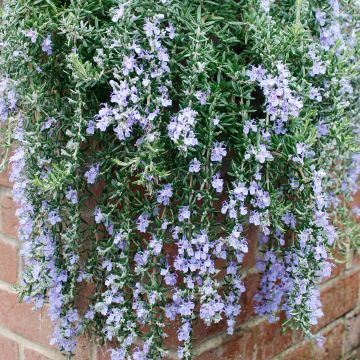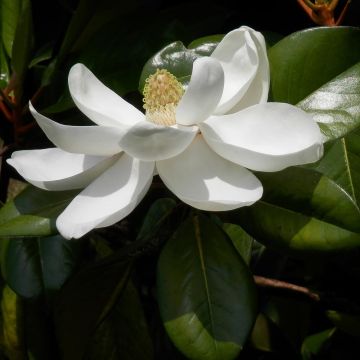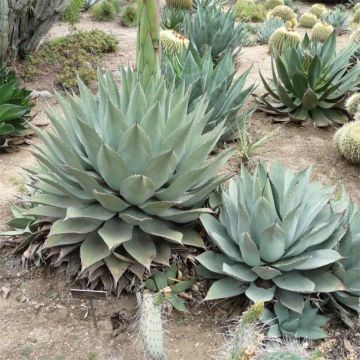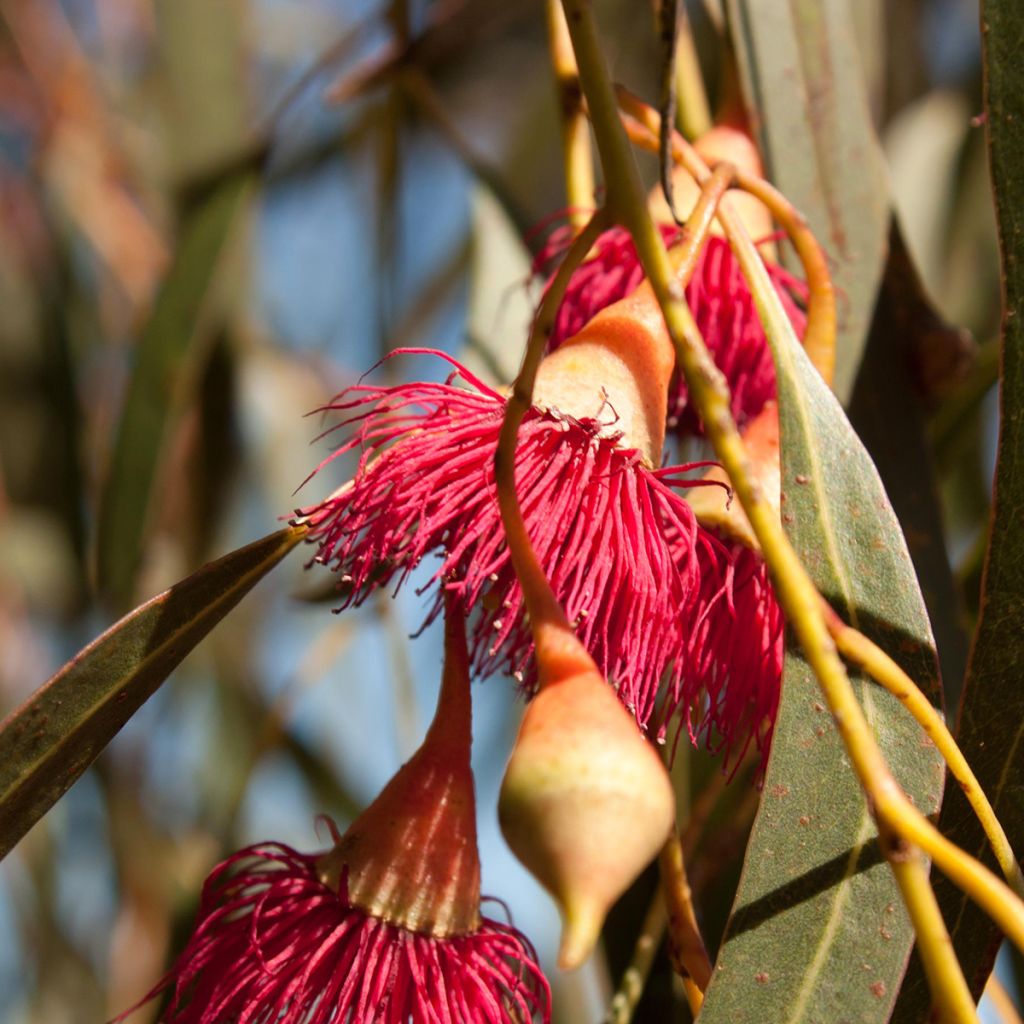

Eucalyptus leucoxylon Rosea
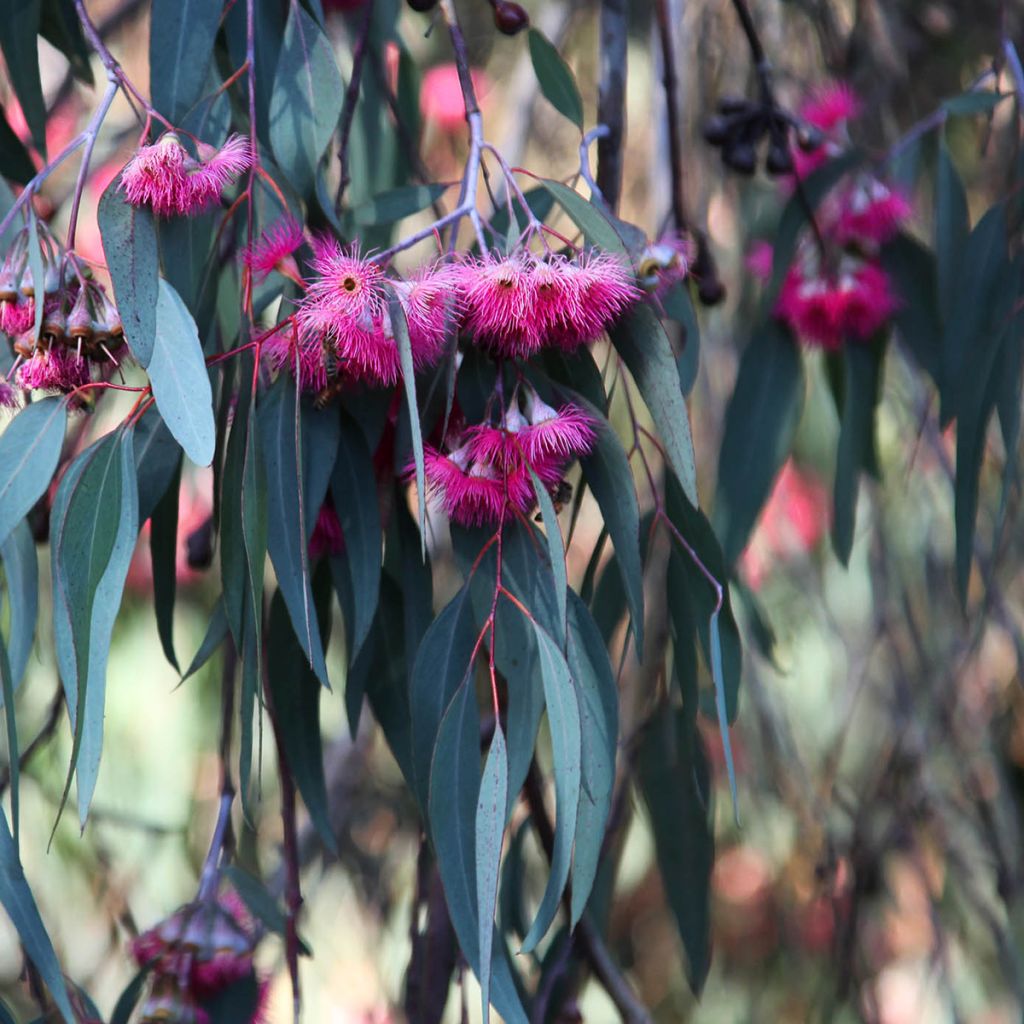

Eucalyptus leucoxylon Rosea
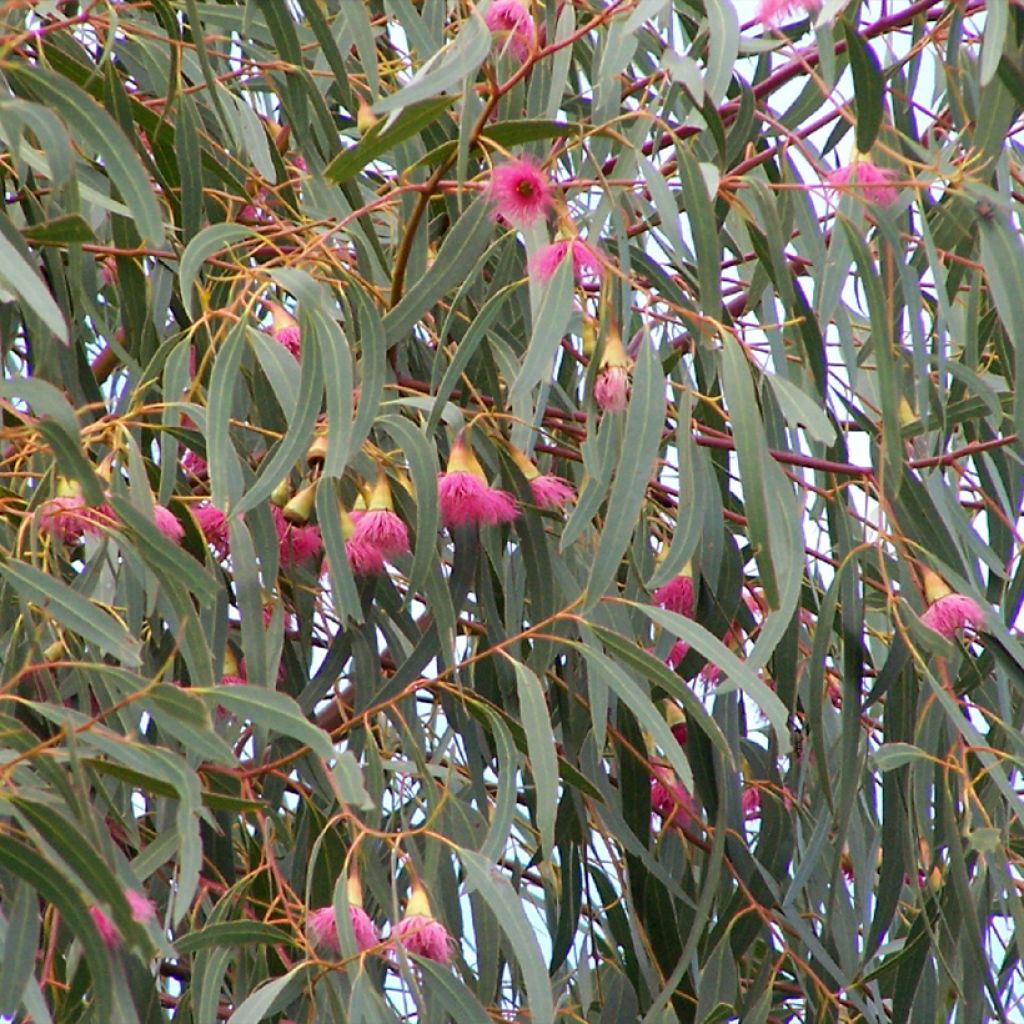

Eucalyptus leucoxylon Rosea
Eucalyptus leucoxylon Rosea
Eucalyptus leucoxylon Rosea
Yellow Gum, Blue Gum, White Ironbark, black mountain ash
This item cannot be shipped to the selected country
Delivery charge from €5.90
More information
Schedule delivery date,
and select date in basket
This plant carries a 24 months recovery warranty
More information
We guarantee the quality of our plants for a full growing cycle, and will replace at our expense any plant that fails to recover under normal climatic and planting conditions.
From €5.90 for pickup delivery and €6.90 for home delivery
Express home delivery from €8.90.
Does this plant fit my garden?
Set up your Plantfit profile →
Description
Eucalyptus leucoxylon Rosea is a charming and elegant small tree. At the end of summer, it produces a quantity of beautiful flowers with red or pink stamens, very attractive to bees and birds. Its long evergreen leaves of a beautiful grey-green are particularly aromatic and its trunk is surprisingly decorative in adulthood, when the barks detach irregularly. Hardy down to - 5°C (41 °F), it requires a sunlit and sheltered location. It tolerates any type of soil, even poor, as long as it is well-draining and neutral or acidic pH, or even slightly alkaline (limestone). Tolerant to dry conditions once established, it will need watering to settle. Withstanding pruning well, this eucalyptus is able to adapt its root system to its vegetation, which allows it to contain its height to the space given to it. Thus, it can be installed in a small garden, integrated into a plant composition alongside Mediterranean bushes, or given a prime spot, in isolation or in a group, in a larger space.
The Eucalyptus leucoxylon, also named Eucalyptus leucoxylon subsp. megalocarpa is a species endemic to the plains and coastal mountains near or in South Australia, where it is known as the Blue Gum and its presence continues in the western half of the state of Victoria, where it is known as the Yellow Gum. The white trunk of this eucalyptus gives the species its name: leucoxylon, which comes from the Greek "leuco" for "white" and "xylon" for "wood". Megalocarpa, in Latin, means "large fruit".
The 'Rosea’ variety comes from the coastal regions in the extreme south-east of South Australia and in the adjoining areas of the extreme west of Victoria. This eucalyptus lives in an arid environment and easily tolerates heat, wind, drought and heavy or rocky soils. With quite slow growth, less than a metre per year, it forms a beautiful, medium-sized, branching tree, reaching 7 to 9 m (23 to 29 ft 6 in) in height, for 4 to 6 m (13 ft to 20 ft) in span, if, it is regularly pruned and trained on several trunks. Unpruned, on a single trunk, it can reach 10 to 20 m (33 ft to 66 ft). Its frame is made up of several stems starting from a lignotuber* located just below the soil surface. The young green shoots are slightly pink and bear dense juvenile foliage, composed of small matte blue-green ovate leaves. Then as it develops, the leaves take a lanceolate to crescent shape, 10 to 15 cm (3.9 to 5.9 in) long by 2 to 3 cm (0.8 to 1.2 in) wide, matte green. The tough, very fragrant leaves, produce a lot of essential oil and can be distilled for the production of cineole-based eucalyptus oil (eucalyptol). As it ages, the bark of the trunk forms a smooth or rough mosaic ranging from white to cream-white through yellow and light blue as it detaches. The abundant flowering occurs mainly between August and October, depending on the summer weather conditions. The yellow floral buds, grouped in threes, bloom into a flower with numerous red or pink anthers, forming a pompon 1 to 2 cm (0.4 to 0.8 in) in diameter. Rich in nectar, they are very attractive to bees. After flowering, the fruits, called "gumnut", appear in the form of a woody, globular, truncate capsule, attached to the branch by a short petiole. They are a beautiful whitish-grey colour and remain attached to the stem for a long time.
This eucalyptus has a *lignotuber, consisting of a swelling rich in starch that forms on the roots just below the soil surface. This organ allows it to restart from the stump in case of severe frost, fire or radical pruning. The plant also produces many shoots from dormant buds located under its bark, which allows it to respond well to coppicing, topping or more severe pruning.
Eucalyptus leucoxylon Rosea finds a place in the garden, planted in isolation, in a clear space, to appreciate the beauty of its barks and the elegance of its foliage. In order to highlight its architectural habit, it is trained on a single trunk or in multi-trunks. This plant resists summer drought with little or no irrigation in well-draining soil, even slightly limestone. It copes well with hot and dry summers, wind and sea spray. It is an ideal plant in a Mediterranean-type garden in association with Arbutus (Arbutus unedo), Callistemon (Bottlebrush), Pomegranates (Punica granatum), Olive Trees (Olea europaea), Mimosas, Pistacia lentiscus …
Report an error about the product description
Eucalyptus leucoxylon Rosea in pictures
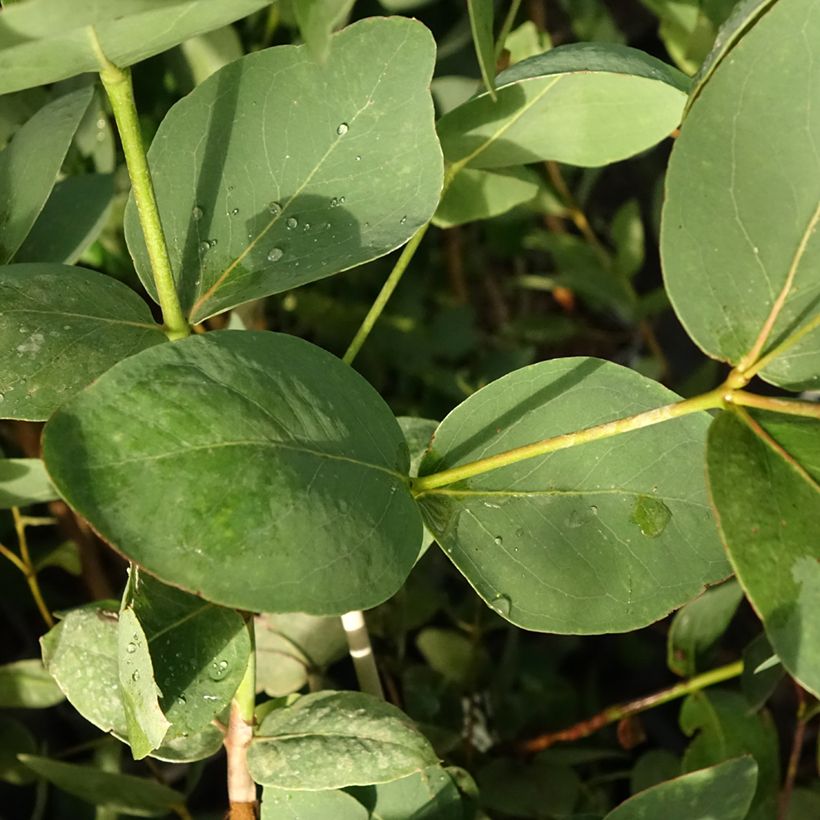

Plant habit
Flowering
Foliage
Botanical data
Eucalyptus
leucoxylon
Rosea
Myrtaceae
Yellow Gum, Blue Gum, White Ironbark, black mountain ash
Eucalyptus leucoxylon subsp. megalocarpa
Australia
Other Eucalyptus
Planting and care
Eucalyptus leucoxylon Rosea is best planted at the beginning of spring in a mild and humid region, and at the beginning of autumn in a dry and hot climate, in a well-prepared, light and drained soil, in a very sunny situation. Sandy, loamy, slightly clayey, acidic or even limestone soils are well tolerated. A well-established specimen resists summer drought and it will be hardy down to - 5 °C (41 °F). This species from the extreme south-east of South Australia does better in climates with dry summers. Pot cultivation is not advised in the long term, as this eucalyptus has a stump that widens a lot through the production of shoots.
For the first two years, regular watering is necessary, then the bush can do without watering in summer. Fertiliser is not recommended. Pruning is not necessary but is well tolerated after flowering or at the end of winter if the stems have frozen. The eucalyptus can be trained into multiple trunks or on a single trunk, by selecting the one that is best placed and cutting all the others flush. And it is quite possible to coppice this small tree to form a large bush whose height you can limit.
Eucalyptuses are useful for drying out wet land, as they are big consumers of water even in winter. However, they become quite resistant to drought once well-established (depending on the species and varieties) and do well in a Mediterranean-type climate.
Young plants take root most easily in the ground. The extensive and deep root system of the Eucalyptus does not like to be disturbed and it tends to form a "bun" if the young plant stays too long in its pot. Choose its location carefully as it will be permanent.
Planting period
Intended location
Care
-
, onOrder confirmed
Reply from on Promesse de fleurs
Evergreen shrubs
Haven't found what you were looking for?
Hardiness is the lowest winter temperature a plant can endure without suffering serious damage or even dying. However, hardiness is affected by location (a sheltered area, such as a patio), protection (winter cover) and soil type (hardiness is improved by well-drained soil).

Photo Sharing Terms & Conditions
In order to encourage gardeners to interact and share their experiences, Promesse de fleurs offers various media enabling content to be uploaded onto its Site - in particular via the ‘Photo sharing’ module.
The User agrees to refrain from:
- Posting any content that is illegal, prejudicial, insulting, racist, inciteful to hatred, revisionist, contrary to public decency, that infringes on privacy or on the privacy rights of third parties, in particular the publicity rights of persons and goods, intellectual property rights, or the right to privacy.
- Submitting content on behalf of a third party;
- Impersonate the identity of a third party and/or publish any personal information about a third party;
In general, the User undertakes to refrain from any unethical behaviour.
All Content (in particular text, comments, files, images, photos, videos, creative works, etc.), which may be subject to property or intellectual property rights, image or other private rights, shall remain the property of the User, subject to the limited rights granted by the terms of the licence granted by Promesse de fleurs as stated below. Users are at liberty to publish or not to publish such Content on the Site, notably via the ‘Photo Sharing’ facility, and accept that this Content shall be made public and freely accessible, notably on the Internet.
Users further acknowledge, undertake to have ,and guarantee that they hold all necessary rights and permissions to publish such material on the Site, in particular with regard to the legislation in force pertaining to any privacy, property, intellectual property, image, or contractual rights, or rights of any other nature. By publishing such Content on the Site, Users acknowledge accepting full liability as publishers of the Content within the meaning of the law, and grant Promesse de fleurs, free of charge, an inclusive, worldwide licence for the said Content for the entire duration of its publication, including all reproduction, representation, up/downloading, displaying, performing, transmission, and storage rights.
Users also grant permission for their name to be linked to the Content and accept that this link may not always be made available.
By engaging in posting material, Users consent to their Content becoming automatically accessible on the Internet, in particular on other sites and/or blogs and/or web pages of the Promesse de fleurs site, including in particular social pages and the Promesse de fleurs catalogue.
Users may secure the removal of entrusted content free of charge by issuing a simple request via our contact form.
The flowering period indicated on our website applies to countries and regions located in USDA zone 8 (France, the United Kingdom, Ireland, the Netherlands, etc.)
It will vary according to where you live:
- In zones 9 to 10 (Italy, Spain, Greece, etc.), flowering will occur about 2 to 4 weeks earlier.
- In zones 6 to 7 (Germany, Poland, Slovenia, and lower mountainous regions), flowering will be delayed by 2 to 3 weeks.
- In zone 5 (Central Europe, Scandinavia), blooming will be delayed by 3 to 5 weeks.
In temperate climates, pruning of spring-flowering shrubs (forsythia, spireas, etc.) should be done just after flowering.
Pruning of summer-flowering shrubs (Indian Lilac, Perovskia, etc.) can be done in winter or spring.
In cold regions as well as with frost-sensitive plants, avoid pruning too early when severe frosts may still occur.
The planting period indicated on our website applies to countries and regions located in USDA zone 8 (France, United Kingdom, Ireland, Netherlands).
It will vary according to where you live:
- In Mediterranean zones (Marseille, Madrid, Milan, etc.), autumn and winter are the best planting periods.
- In continental zones (Strasbourg, Munich, Vienna, etc.), delay planting by 2 to 3 weeks in spring and bring it forward by 2 to 4 weeks in autumn.
- In mountainous regions (the Alps, Pyrenees, Carpathians, etc.), it is best to plant in late spring (May-June) or late summer (August-September).
The harvesting period indicated on our website applies to countries and regions in USDA zone 8 (France, England, Ireland, the Netherlands).
In colder areas (Scandinavia, Poland, Austria...) fruit and vegetable harvests are likely to be delayed by 3-4 weeks.
In warmer areas (Italy, Spain, Greece, etc.), harvesting will probably take place earlier, depending on weather conditions.
The sowing periods indicated on our website apply to countries and regions within USDA Zone 8 (France, UK, Ireland, Netherlands).
In colder areas (Scandinavia, Poland, Austria...), delay any outdoor sowing by 3-4 weeks, or sow under glass.
In warmer climes (Italy, Spain, Greece, etc.), bring outdoor sowing forward by a few weeks.

































